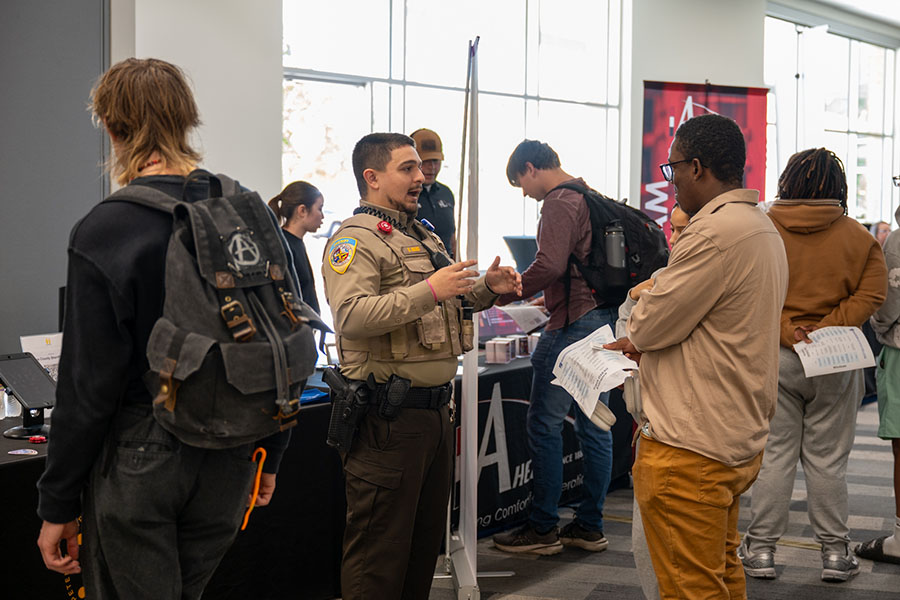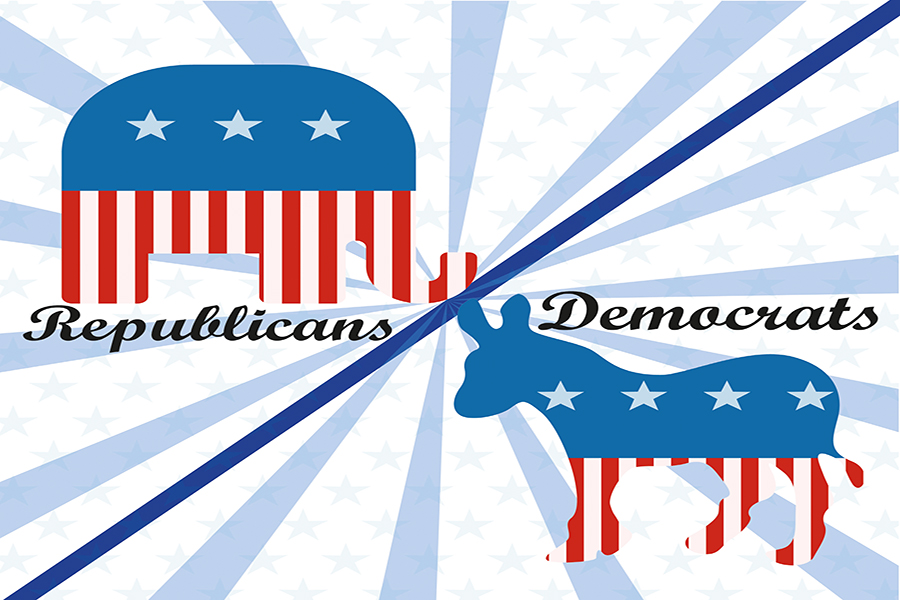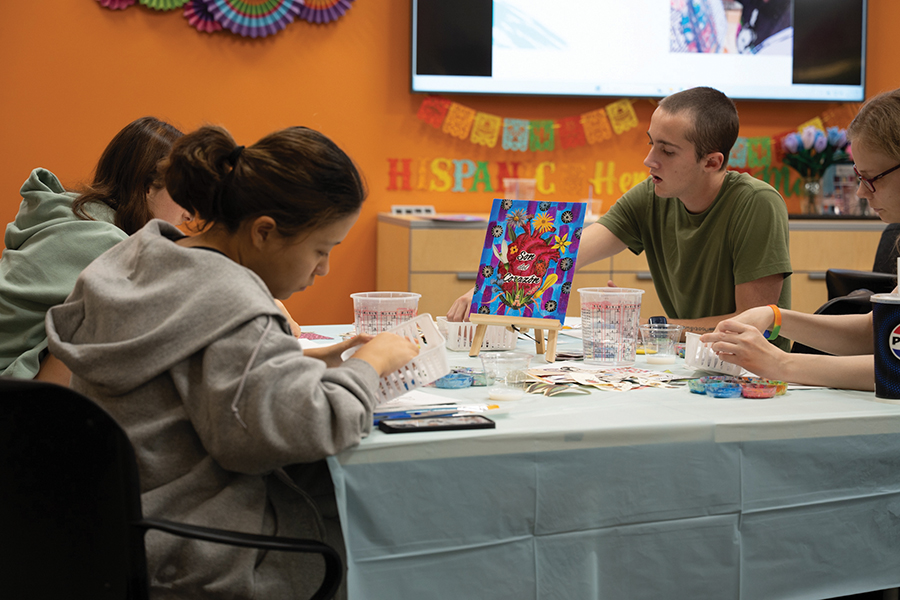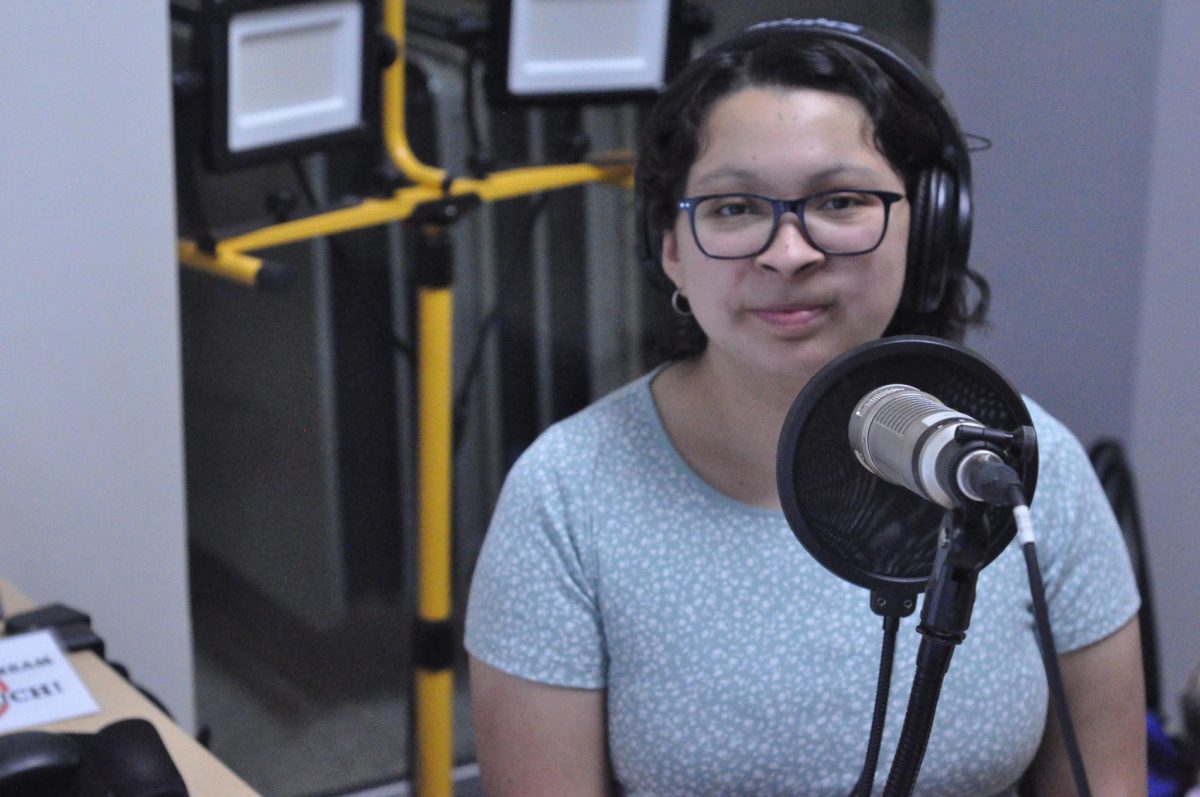The crowd of thousands of red-clad protesters in the state capitol building on Feb. 17 chanted, “This is what democracy looks like,” loud enough to disrupt Senate proceedings. The group included students, teachers, state employees, nurses, firefighters, police and many more who expressed concern for the future of their state.
In the course one week, tens of thousands of people in Wisconsin have taken democracy out of the polling centers and back into the streets to protest a bill that, amongst other things, will restrict unions’ collective bargaining rights and require state employees to contribute more to their health care and pensions.
“Forty years slowly eroding, and this is the boiling point, this is the boiling point. We need to have everybody here, realizing what’s going on,” insisted Travis Tangen with a voice hoarse from yelling through the Senate entrance.
Tangen is a biology teacher at Madison Memorial High. He insisted that the bill is harmful to the entire middle class, which he said is the majority of people.
Protests against Gov. Scott Walker’s budget repair bill began almost immediately after he announced it on Friday, Feb. 11. However, Tuesday Feb. 15 marked the first of the large protests at the Capitol. Demonstrations continued to escalate in the week that followed.
At first, only a handful of people showed up to support the bill. The majority of people gathered at the Capitol were there to protest. Signs sported slogans like “Worker’s rights are human rights,” and “Care for a teacher like they care for your child.” Although, individual demands at the rallies varied greatly, the overall sentiment remained the same. “Kill the bill,” the crowd chanted in unison.
David Zimmerman of the University of Wisconsin Madison called the bill “misguided.” Like many others on Capitol Square, Zimmerman said his biggest concern was the threat to the quality of education in Wisconsin.
“I’m here because I’m outraged and alarmed about what is going to happen to Wisconsin,” he said. “If this thing passes, who’s going to want to come here to teach?”
Some called Walker’s plan union busting. Many chanted “Recall Walker,” a demand that has recently broadened to asking for the recall of all Republican senators advocating for the bill. People also carried signs that brought up issues like cuts to Badger Care and Medicaid.
Even some workers in the private sector came out against the bill. They carried signs with slogans like “An injury to one is an injury to all,” referencing the millions of dollars of buying power that will be taken from the public sector with the passage of this bill.
Self-proclaimed “private tax-payer,” Karla Stoebig, a retail worker in Madison, said that even though the bill was not going to directly affect her, she came to the Capitol building to show her support. Stoebig made a banner reading “Solidarity” which she strung up inside the Capitol building.
“If you feel like rights are being taken away from someone, if you see injustice, you have to stand up for it,” Stoebig explained. “We’re sticking together.”
A huge cheer rang through the capitol as police and firefighters marched through the Capitol. Although the bill would not directly affect them either, many carried signs that said, “Firefighters for Labor.” All present expressed messages of solidarity.
Some people slept overnight at the Capitol on Tuesday, beginning what became the organized occupation of the building. Late into the night, beats from a group of drummers can be heard reverberating off the marble walls and floor as the atmosphere turns from protest to party.
Messages of solidarity for protesters poured in from neighboring states where people expect to experience similar legislation in the near future. Food and water have also been donated to protesters staying in the Capitol. There have even been international donations.
University of Wisconsin Milwaukee student Lisa Brown said that the noise and hard floor make it impossible to actually sleep when you’re staying in the capitol. However, the experience is something she will never forget.
“It’s very unified. Lots of people together. It’s like a big slumber party,” Brown explained.
By Thursday, the bill had passed through the Joint Finance Committee and moved on to the Senate and Assembly to be voted on. The size of the protests swelled inside and out of the capitol to a reported 30,000. Chanting became louder and angrier as the crowds became more and more frustrated with Walker’s refusal to negotiate. Phrases like “general strike” could be heard murmuring through the crowd.
As the Senate was opened, thousands gathered outside, banging on the door in defiance. Some union members prepared to occupy the senate chamber if the bill looked like it was going to pass. Others tried desperately to be heard by the senators inside.
“I’m here to fight for bargaining rights for employees in the state of Wisconsin … (I am) trying to influence any state senators to do the right thing,” yelled Mary Ploeser, a teacher for Madison Metropolitan School District, as she banged on the chamber door with a fist.
Soon after, rumors began to fly that the Senate Democrats had fled the state in order to stall the vote. As Republican senators and the State Patrol searched the building for the missing Democrats, thousands of protesters conducted a massive sit-in of the Capitol.
Some protesters controlled the flow of human traffic in an out of the senate chamber. Another group of protesters stood shoulder-to-shoulder blocking the entrance to the office of one Democratic senator who had not yet left the building. To coordinate the action, text messages were sent via a twitter feed to many in the crowd.
In the end, all of the Democratic senators made it safely to Illinois, and effectively stalled the vote in the Senate with the help of the protesters gathered that day. The atmosphere turned from one of intense frustration to renewed confidence as the occupiers of the capitol celebrated their small success.
The celebratory atmosphere continued into the next day as Rev. Jesse Jackson spoke encouragement to a crowd of thousands of protesters. Around the same time, protesters were also informed that a Tea Party rally was scheduled for the South entrance of the capitol the following day. By Friday evening, non-violence propaganda had been widely circulated as organizers attempted to thwart any actions that could cast the protest in bad light.
Although the crowds of protesters grew to nearly 70,000 on Saturday, the people remained somewhat subdued in the face of Walker’s supporters. The majority marched counter clockwise around Capitol Square, playing drums and chanting. Others continued the occupation inside. The demonstration felt more like a family event that day with creatures from Star Wars and the Statue of Liberty among the protesters.
The Tea Party rally drew a crowd of around 1,000 and was fenced off from the other demonstrators. It featured several speakers including Herman Cain.
“For the past several days America has heard from 10 percent of the work force. It is now time for them to hear from the other 90 percent of the work force,” Cain preached.
Still, protesters outnumbered supporters on Saturday nearly 70 to one. People on both sides remained calm and peaceful as the two groups exchanged chants. Many people could be heard thanking the police on duty for their help and patience.
No one really knows how long these events will continue. No one knows how long the Democrats can stay away or what good that will do. One thing is certain though, as Wisconsin citizens challenge the balance of wealth and power in the state, the world watches.
“I think the bigger issue is inequality among people in America,” said UW-Madison graduate student Jamin Dreyer as he stood protesting in the rain on Sunday evening. “It is bigger than the university. It’s bigger than Wisconsin. It’s really a global issue of the haves and have-nots.”



























